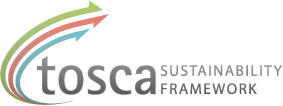Keyword: R&D (21)
Identify significant sustainability aspects for the product
By In identifying the significant sustainability aspects of a product or process it is vital to have a supply chain approach in order to avoid suboptimizations. Questions that may need to be asked are: Are the products dependent on natural raw materials that may become scarce and therefore more expensive? Are the production technology more energy intensive than more […]
Identify and map your product value chain
By The first step of working with sustainability in your value chain is to identify and map your chain: What Who are your suppliers and what does their upstream chain look like? Who are your customers and customers’ customers and /or consumers? How are your products handled at the end of life and by whom? In practice, […]
Implement the sustainability strategy
By Once the sustainability strategy has been defined and decided, it needs to be communicated and implemented across the organisation; into the departments where it can be broken down into departmental strategies and goals. If the strategy have been developed in a cross-functional team, the implementation can be facilitated as the different parts of the […]
Eco-efficiency methodology
By An EEA assesses the ecological impact and financial structure of competing products, processes or services delivering the same customer benefit, and identifies the best alternative. It includes all steps along the life cycle. The general procedure for carrying out EEA is presented in figure 1. The eco-efficiency methodology is based on a combination of […]
Review of sustainability performance of the product portfolio
By A review of the sustainability performance of the product portfolio can aid with defining priorities for the development work. The aim of the review is to gain knowledge of the performance of the portfolio as a whole and for the included parts, and to identify improvement potentials. To avoid sub-optimisations, a life cycle perspective […]
Environmental evaluation as part of the product development process
By Since the mid-90s an environmental evaluation is an integrated part of the way of working for development of SCA hygiene products. The evaluation is performed at a specific decision stage in the development process of materials and products, and is performed using life cycle assessment (LCA). Way of working The evaluation consists of a comparison […]
Scientific state of the art on sustainable product development
There are many ways in which a company can work on minimizing the environmental impact from its products. Two of the most recognized and well established methods are Design for Environment and Ecodesign, which are introduced below. The concept of design-for-environment (DfE) is described by Hart (1997) as a tool for producing products that are […]
Incorporate sustainability considerations into the product development process
By There are several models for the product development process used today. One example is the Stage-Gate® model, see more under further reading below. Often the product development processes includes a number stages and decisions points, where the future of the project is decided. Sustainability aspects should be part of the basis for these decisions, and need to be considered and […]
Working with your upstream supply chain
By The sustainability performance of your suppliers and upstream supply chain actors has an impact on the performance of the products, through the production of materials and energy that are used in the product. Consequently an organisation has indirect control of the performance of the product through the selection of which suppliers and materials to […]
Uses of Eco-efficiency in business
By Eco-efficiency has become a widely used management concept among large companies worldwide. The reason for this can be as Kuosmanen states: Many policy makers, business managers, and consumers are keen to make environmentally friendly decisions, but they simply lack the necessary information resources to compare different alternatives. …. The function of Eco-Efficiency measures is […]

